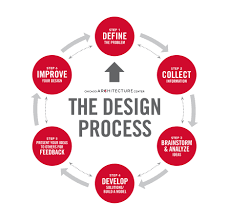This project was conceived to better understand the future of the internet, given Generative AI and the burgeoning population. This ultimately has to do with the increasingly abundant amount of information, and our increasing collective ability to remember a lot of what has happened, and recollect what has happened; all of us, Generative AI included. I would like that we amended our current semantics to Generative Ancestral Intelligence, as I think that this gives a clearer idea for the matter of discussion. Below find the modules for this iterative journey through the expanse of The Mind.
The Mind - A Human Faculty
- What is the mind and what can it do - planetarium
- What can the mind be trained to do and how do we approach the education of the mind - library and/or university
- Literacy & Symbolism
- Language
- Math
- Science
- Social Studies
- Web Literacy
- Integration and Creative Thinking
- The Internet - The Virtual Mind - The Computer Lab
- What are Data Storage and Documentation?
- A word on unregistered thought as the domain of thinking, and a recommendation for conversation.
- Cogenerated Thought - Content creation & registry - The Computer Lab
- The World Wide Web
- Bing
- Amazon
- YouTube
- X.Com
- Wikipedia
- ChatGPT
- 211 & 311
- Co-generative dialogue and its impacts on content creation
- What is Co-gen and who is Christopher Emdin?
- Examples of project resolution initiatives and strategies
- Water - Storm Water Site, Irrigation System, MS River, Water Tower
- Food - MS Food Bank, Kroger, Mobile Grocer, Food Truck, A Home Restaurant
- Clothing - https://centenarymemphis.com/centenary-clothes-closet/, https://ccwtn.org/our-services/families/
- Shelter - Hub Community Housing, Binghampton & Uptown Land Trust and TIF, https://www.fraysercdc.org/start-here
- Money - Cxffee Black, Cynthia Daniels, Mayor Young, Memphis Industrial Processes
- Education & Mental Wellbeing - United Way Driving the Dream, UofM, Rhodes, TCAT, Tech901, CodeCrew, Google Classroom, Khan Academy
- Resolving your problem, the intersection of your position and your authority.
- Forming a Team
- Random vs Interest-Based
- Forming, Storming (differences and similarities), Norming (collaboration rules, KIPP), Performing (finding and using a template, consider your time)
- Revisiting the World Wide Web - Problems That Are Solved & Problems They Create
- The Design Process - STEM Lab w/ Mr. Booker
- Create with iteration in mind - Various - Permission Slip Through Form
- Capstone Project
- Problem
- Research
- Specify Requirements - Blogger.com -> Genius Screen vs Stream
- Brainstorm, Evaluate and Choose Solution - Decision Matrix
- Develop and Prototype Solution
- Test Solution (w/ End Users)
- In What Ways Does the Solution Meet and Not Meet Requirements?
- Communicate Results
- Notes
- Iterative being successional
- Documentation
- "Constant" creation
- https://www.memphistn.gov/call311/
- https://tn211.myresourcedirectory.com/index.php?option=com_cpx&task=search.query&all=&any=&none=&zipcode=38111&range=30&city=&county=&state=&geo_zipcode=&geo_city=&geo_county=&geo_state=&volunteer_query=&wishlist_query=&unit_list=&code=BM-6500.1500-250&target_pop_id=&group_id=&client_app=website&name=
- https://www.fraysercdc.org/start-here#:~:text=Contact%20our%20one%20of%20our,programs%20that%20fit%20your%20finances.
- https://interestingengineering.com/innovation/whats-the-energy-cost-internet
- https://datacommons.org/explore/#q=how%20much%20energy%20is%20consumed%20annually%20in%20the%20us%2C%20and%20what%20categories%20consume%20most%3F
- Google Image Search for The Design Process
Like This
What can the mind be trained to do and how do we approach the education of the mind - library and/or university
Language
Math
Science
Social Studies
Web Literacy
Integration and Creative Thinking
This is the middle section.
This is the lower section.




Comments
Post a Comment